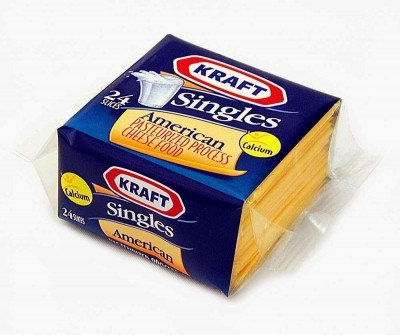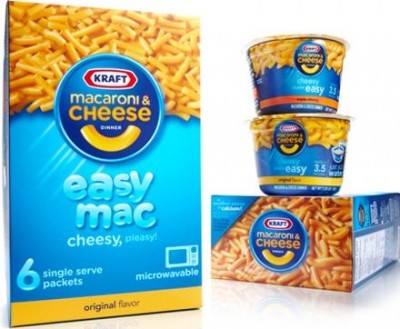Kraft’s earnings drop as it juggles price increases, higher commodity costs and revitalizing brands

The packaged food giant reported Oct. 29 its net income fell to $446 million in the third quarter ending Sept. 27 from $500 million a year earlier due in part to a 1.2 percentage point drop in sales volume during the period.
The decline in sales volume reflects Kraft’s significant price increase in cheese, meats and coffee ahead of competitors, the Northfield, Ill., firm said Oct. 29 during a call with analysts. It also said category softness in meals and desserts, due to consumers’ increased interested in organic, natural and whole foods, contributed to the decrease.
But price hikes can cut both ways and they helped keep afloat overall net revenues, which increased 0.1% to $4.4 billion from the same time last year, the firm reported.
Kraft Chief Finance Officer Teri List-Stoll acknowledged during the call that the company has “priced aggressively” but said it was necessary “in the face of what are truly unprecedented price levels in certain parts of our commodity basket.”
For example, milk prices hit a record high in September at $25 per unit for Class III milk futures, a 16% increase from the previous fiscal quarter of about $21.50, analysts with Trefis say in an Oct. 28 note. The price of beef also rose 35% from $2 a pound to $2.70 in the third quarter, they said.
The negative impact from the price increases should level out as competitors also are forced to raise prices in the face of higher commodity costs, analysts agreed. However, they were skeptical it would make a enough of a difference in Kraft’s financials.
Kraft hopes innovation offsets higher prices
Kraft recognized that consumers are not willing to pay more without getting more in return, which is why the company is cleaning up its ingredient lists and launching new products to meet consumers’ evolving demands, CEO Tony Vernon told investment analysts during the firm’s quarterly call.
For example, the firm is responding to increased demand for protein with the recent launch of Oscar Mayer P3 Portable Protein Packs, which offer consumers 12 to 13 grams of protein from easy-to-eat pre-cut meats, cheeses and nuts in a small dumbbell-shaped package.
It also launched Oscar Mayer Deli Fresh Bold – a line of cold cuts that taps “into a trend inspired by Millennials and multicultural consumers, and that’s demand for bolder, spicier flavors,” Vernon said. He added that the more complex flavors do not equal complicated ingredient lists, which consumers do not want.
“Our Bold varieties are made with no artificial preservatives,” he said.
Changes in the Philadelphia soft cream cheese line also reflect consumer desire for bold flavors and clean labels, as does the launch of Kraft Singles without artificial preservatives, Vernon said.
Finally, Vernon notes the “successful rollout” of McCafe bagged coffee in Canada as a modernized brand responding to consumers’ changing desires. Along with partner McDonald’s, Kraft will launch the coffee in the U.S. in 2015.
List-Stoll said innovations and renovations like these are “big bets” that “not only help our topline growth, but they are the kinds of equity building actions that help us to price when necessary to offset higher input costs.”
In addition, “these innovations were all huge enablers in the quarter and point to the importance of continuing to contemporize our great brands,” said Vernon.
Kraft shifts advertising from TV to digital
Kraft also hopes to turn its profits around by shifting advertising from traditional media outlets to social and digital media with the hope of reaching younger consumers.
“Our advertising is about flat versus last year. The composition, however, is very different. Traditional media is down double digits while digital offset most of that,” accounting for 35% of the total spend in the third quarter compared to 25% a year ago, List-Stoll said.
She added, “several of our most impactful initiatives this year have been entirely digital: Velveeta Cheesepocalypse response, ad support for specialty coffee pods and our buzz-worthy activations for Oscar Mayer bacon.”
She explains the firm will “maintain our discipline around fewer, bigger, better” ads in part by pulling back on businesses, like meals and desserts, until it has a campaign it knows will resonate with consumers.
Analysts doubt Kraft’s brands’ appeal to Millennials
Analysts with Credit Suisse are skeptical Kraft’s digital marketing is enough to capture the coveted Millennial shoppers.
“While we understand the potential efficiencies Kraft can generate by shifting more of its media to digital and way from television, we continue to question whether Kraft’s brands can truly resonate with the Millennial demographic that uses digital media the most. How many Millennials will opt in to the idea of getting a Tweet from Miracle Whip when they walk into a grocery store?” they ask in an Oct. 30 note.
Reflecting on Kraft’s brands, many of which have been around for decades, Credit Suisse analysts add: “In general, the portfolio seems poorly positioned to capture the hearts and minds of this cohort or emerging consumers.”
Vernon said Kraft’s mature brands can connect with the younger generation, as demonstrated by Velveeta’s ability to “continue to delight” the firm and appeal to Millennials as “the Super Bowl of choice,” even though it is one of the firm’s oldest brands.
Vernon acknowledged, however, that when it comes to A1, Shake and Bake and Jell-O, “it’s our job to contemporize the ceremony of those great brands” and show consumers how they “play to the preparation of the new Millennials.”
He also defended the potential of all the firm’s brands when pushed by some analysts during the call to consider pruning the portfolio.
“I’ve been pretty consistent in saying we love all of our brands. That does not mean that we don’t look at the other options and consider whether someone might do a better job on a brand or two, but the reality is today we think this is a great portfolio that creates advantages for us,” Vernon said.
















